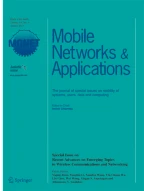Abstract
In this paper, the reliability performance analysis of coupled cyber-physical systems under different network types is investigated. To study the underlying network model, their interactions, and relationships and how cascading failures occur in the interdependent cyber-physical systems, we propose a practical model for interdependent cyber-physical systems using network percolation theory. Besides, for different network models, we also study the effect of cascading failures effect and reveal mathematical analysis of failure propagation in such systems. Then we analyze the reliability of our proposed model caused by random attacks or failures by calculating the size of giant functioning components in interdependent cyber-physical systems. In order to gain an insight into the proposed analysis model, numerical simulation analysis is also provided. The results show that there exists a threshold for the proportion of faulty nodes, beyond which the cyber-physical systems collapse. We also determine the critical values for different system parameters. In this way, the reliability analysis based on network percolation theory can be effectively utilized for anti-attack and protection purposes in coupled cyber-physical systems.
Similar content being viewed by others
References
Lee E A. Introducing embedded systems: a cyber-physical approach[C]//Proceedings of the 2009 Workshop on Embedded Systems Education. ACM, 2009: 1-2
Lee E (2008) Cyber physical systems: design challenges. In: IEEE Symposium on Object Oriented Real-Time Distributed Computing. IEEE Computer Society
Kurt S, Yildiz HU, Yigit M, Tavli B, Gungor VC (2016) Packet size optimization in wireless sensor networks for smart grid applications. IEEE Trans Ind Electron 64(3):2392–2401
Wang W, Tang M, Stanley HE et al (2018) Social contagions with communication channel alternation on multiplex networks. Phys Rev E 98(6):062320
Wang T, Zhou J, Liu A, et al. Fog-based computing and storage offloading for data synchronization in IoT. IEEE Internet Things J.(2018)[J].2018,6(3):4272 - 4282
Fadel E, Faheem M, Gungor VC, Nassef L, Akkari N, Malik MGA et al (2017) Spectrum-aware bio-inspired routing in cognitive radio sensor networks for smart grid applications. Comput Commun 101:106–120
Wang W, Wang ZX, Cai SM (2018) Critical phenomena of information spreading dynamics on networks with cliques. Phys Rev E 98(5):052312
Khan AA, Rehmani MH, Reisslein M (2017) Requirements, design challenges, and review of routing and mac protocols for cr-based smart grid systems. IEEE Commun Mag 55(5):206–215
Liu Z, Huang Y, Li J et al (2018) DivORAM: towards a practical oblivious RAM with variable block size. Inf Sci 447:1–11
Cai M, Cui Y, Stanley HE (2017) Analysis and evaluation of the entropy indices of a static network structure. Sci Rep 7(1):9340
Li J, Huang Y, Wei Y et al (2019) Searchable symmetric encryption with forward search privacy. IEEE Trans Dependable Secure Computhttps://doi.org/10.1109/TDSC.2019.2894411
Bayram IS, Michailidis G, Devetsikiotis M, Granelli F (2013) Electric power allocation in a network of fast charging stations. IEEE J Sel Areas Commun 31(7):1235–1246
Xu G, Liu J, Lu Y, Zeng X, Zhang Y, Li X (2018) A novel efficient maka protocol with desynchronization for anonymous roaming service in global mobility networks. J Netw Comput Appl, S1084804518300407
Zhao JB, Zhang G, Scala ML, Dong ZY, Chen C, Wang J (2015) Short-term state forecasting-aided method for detection of smart grid general false data injection attacks. IEEE Trans Smart Grid PP(99):1–11
Cai M, Wang W, Cui Y et al (2018) Multiplex network analysis of employee performance and employee social relationships. Physica A 490:1–12
Ozay M, Esnaola I, Vural FTY, Kulkarni SR, Poor HV (2015) Machine learning methods for attack detection in the smart grid. IEEE Trans Neural Netw Learn Syst 27(8):1773–1786
Xu G, Liu J, Lu Y et al (2018) A novel efficient MAKA protocol with desynchronization for anonymous roaming service in Global Mobility Networks. J Netw Comput Appl 107:83–92
Tan KM, Ramachandaramurthy VK, Yong JY (2016) Integration of electric vehicles in smart grid: a review on vehicle to grid technologies and optimization techniques. Renew Sustain Energy Rev 53:720–732
Li S, Yilmaz Y, Wang X (2017) Quickest detection of false data injection attack in wide-area smart grids. IEEE Trans Smart Grid 6(6):2725–2735
Hartmann T, Fouquet F, Klein J, et al. Generating realistic smart grid communication topologies based on real-data[C]//2014 IEEE International Conference on Smart Grid Communications (SmartGridComm). IEEE, 2014: 428-433.
Broman Toft M, Schuitema G, Th?Gersen, J. (2014) Responsible technology acceptance: model development and application to consumer acceptance of smart grid technology. Appl Energy 134:392–400
Xu G, Zhang Y, Sangaiah AK et al (2019) CSP-E2: an abuse-free contract signing protocol with low-storage TTP for energy-efficient electronic transaction ecosystems. Inf Sci 476:505–515
Gao J, Buldyrev SV, Stanley HE, Havlin S (2011) Networks formed from interdependent networks. Nat Phys 8(1):40–48
Gao J, Buldyrev SV, Stanley HE, Xu X, Havlin S (2013) Percolation of a general network of networks. Phys Rev E 88(6):062816
Buldyrev SV, Parshani R, Paul G, Stanley HE, Havlin S (2009) Catastrophic cascade of failures in interdependent networks. Nature 464(7291):1025–1028
Acknowledgements
This work was supported by National Natural Science Foundation of China (Grant No.61602418, No.61672468), Zhejiang Provincial Natural Science Foundation of China (Grant No.LQ16F020002), Social development project of Zhejiang provincial public technology research (Grant No.2016C33168), MOE (Ministry of Education in China) Project of Humanity and Social Science (Grant No.15YJCZH125) and the Opening Project of Shanghai Key Laboratory of Integrated Administration Technologies for Information Security (Grant No. AGK2018001).
Author information
Authors and Affiliations
Corresponding author
Additional information
Publisher’s note
Springer Nature remains neutral with regard to jurisdictional claims in published maps and institutional affiliations.
Rights and permissions
About this article
Cite this article
Peng, H., Kan, Z., Zhao, D. et al. Security Assessment for Interdependent Heterogeneous Cyber Physical Systems. Mobile Netw Appl 26, 1532–1542 (2021). https://doi.org/10.1007/s11036-019-01489-z
Published:
Issue Date:
DOI: https://doi.org/10.1007/s11036-019-01489-z
